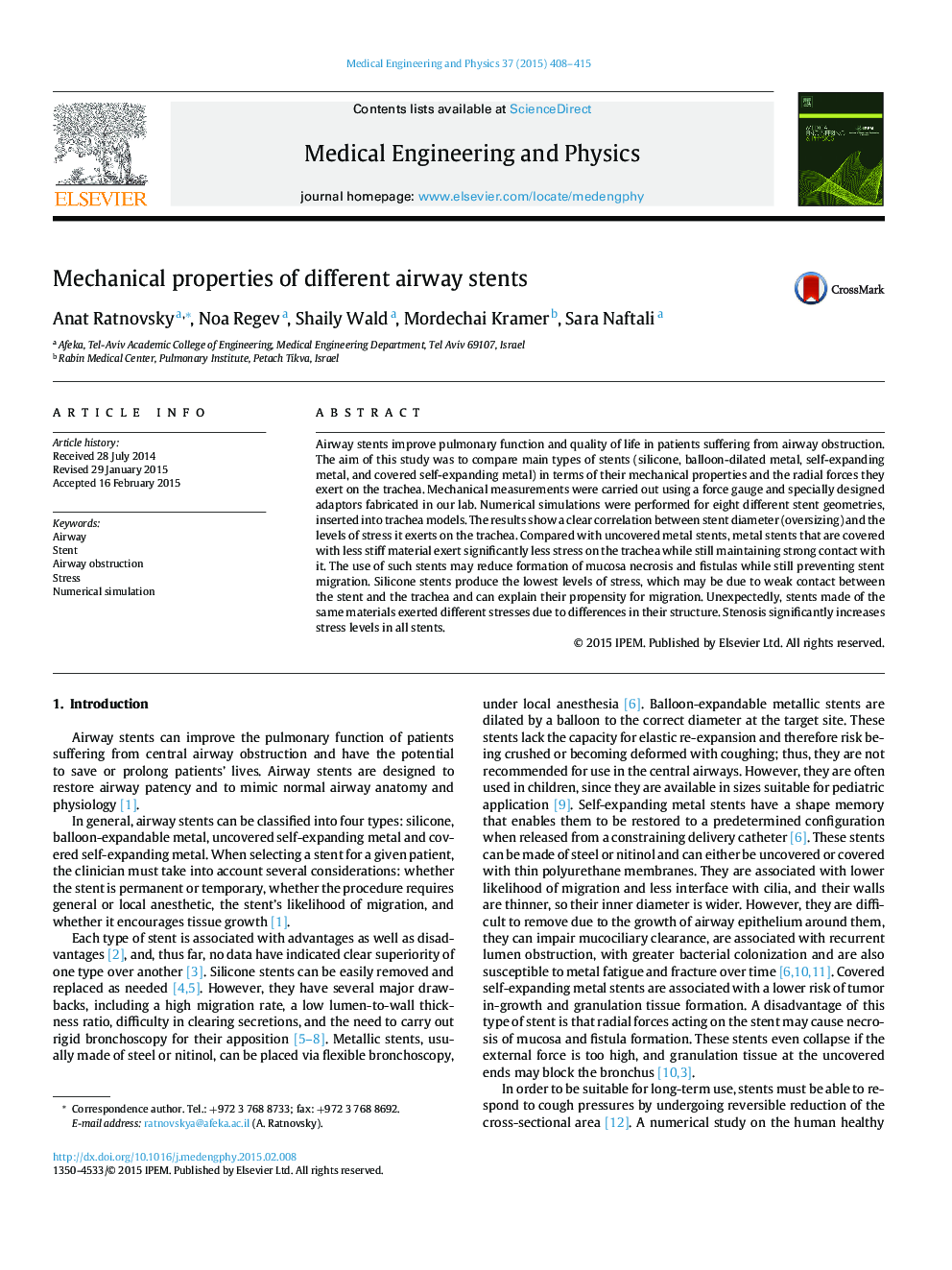| Article ID | Journal | Published Year | Pages | File Type |
|---|---|---|---|---|
| 10434977 | Medical Engineering & Physics | 2015 | 8 Pages |
Abstract
Airway stents improve pulmonary function and quality of life in patients suffering from airway obstruction. The aim of this study was to compare main types of stents (silicone, balloon-dilated metal, self-expanding metal, and covered self-expanding metal) in terms of their mechanical properties and the radial forces they exert on the trachea. Mechanical measurements were carried out using a force gauge and specially designed adaptors fabricated in our lab. Numerical simulations were performed for eight different stent geometries, inserted into trachea models. The results show a clear correlation between stent diameter (oversizing) and the levels of stress it exerts on the trachea. Compared with uncovered metal stents, metal stents that are covered with less stiff material exert significantly less stress on the trachea while still maintaining strong contact with it. The use of such stents may reduce formation of mucosa necrosis and fistulas while still preventing stent migration. Silicone stents produce the lowest levels of stress, which may be due to weak contact between the stent and the trachea and can explain their propensity for migration. Unexpectedly, stents made of the same materials exerted different stresses due to differences in their structure. Stenosis significantly increases stress levels in all stents.
Related Topics
Physical Sciences and Engineering
Engineering
Biomedical Engineering
Authors
Anat Ratnovsky, Noa Regev, Shaily Wald, Mordechai Kramer, Sara Naftali,
